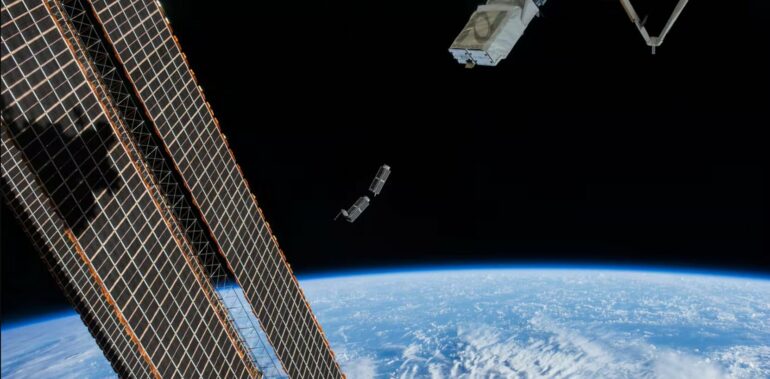Most CubeSats weigh less than a bowling ball, and some are small enough to hold in your hand. But the impact these instruments are having on space exploration is gigantic. CubeSats – miniature, agile and cheap satellites – are revolutionizing how scientists study the cosmos.
A standard-size CubeSat is tiny, about 4 pounds (roughly 2 kilograms). Some are larger, maybe four times the standard size, but others are no more than a pound.
As a professor of electrical and computer engineering who works with new space technologies, I can tell you that CubeSats are a simpler and far less costly way to reach other worlds.
Rather than carry many instruments with a vast array of purposes, these Lilliputian-size satellites typically focus on a single, specific scientific goal – whether discovering exoplanets or measuring the size of an asteroid. They are affordable throughout the space community, even to small startup, private companies and university laboratories.
Tiny satellites, big advantages
CubeSats’ advantages over larger satellites are significant. CubeSats are cheaper to develop and test. The savings of time and money means more frequent and diverse missions along with less risk. That alone increases the pace of discovery and space exploration.
CubeSats don’t travel under their own power. Instead, they hitch a ride; they become part of the payload of a larger spacecraft. Stuffed into containers, they’re ejected into space by a spring mechanism attached to their dispensers. Once in space, they power on. CubeSats usually conclude their missions by burning up as they enter the atmosphere after their orbits slowly decay.
Case in point: A team of students at Brown University built a CubeSat in under 18 months for less than US$10,000. The satellite, about the size of a loaf of bread and developed to study the growing problem of space debris, was deployed off a SpaceX rocket in May 2022.
A CubeSat can go from whiteboard to space in less than a year.
Smaller size, single purpose
Sending a satellite into space is nothing new, of course. The Soviet Union launched Sputnik 1 into Earth orbit back in 1957. Today, about 10,000 active satellites are out there, and nearly all are engaged in communications, navigation, military defense, tech development or Earth studies. Only a few – less than 3% – are exploring space.
That is now changing. Satellites large and small are rapidly becoming the backbone of space research. These spacecrafts can now travel long distances to study planets and stars, places where human explorations or robot landings are costly, risky or simply impossible with the current technology.
But the cost of building and launching traditional satellites is considerable. NASA’s lunar reconnaissance orbiter, launched in 2009, is roughly the size of a minivan and cost close to $600 million. The Mars reconnaissance orbiter, with a wingspan the…



